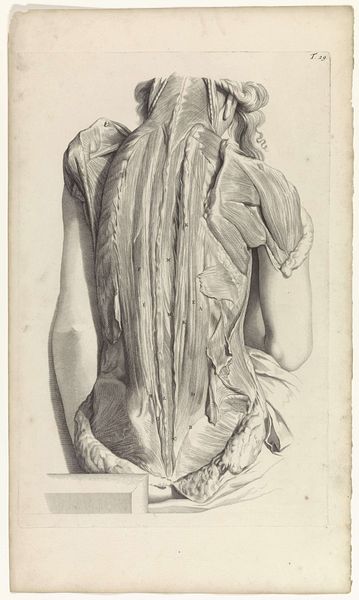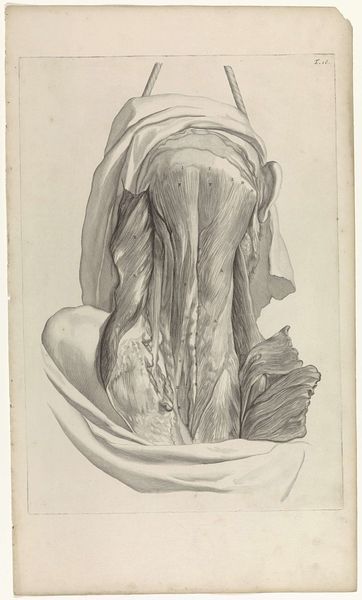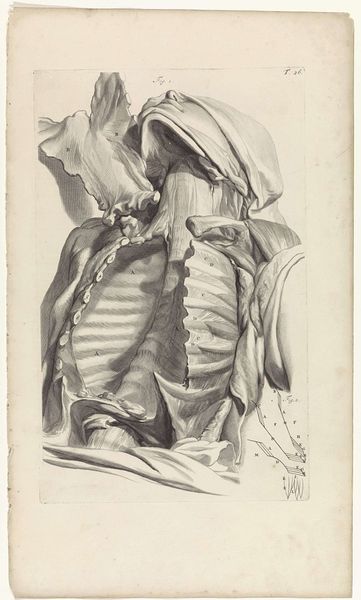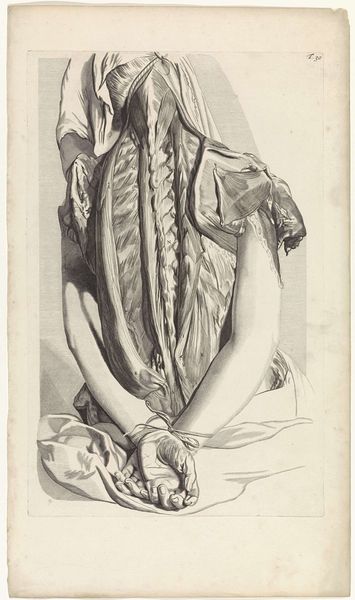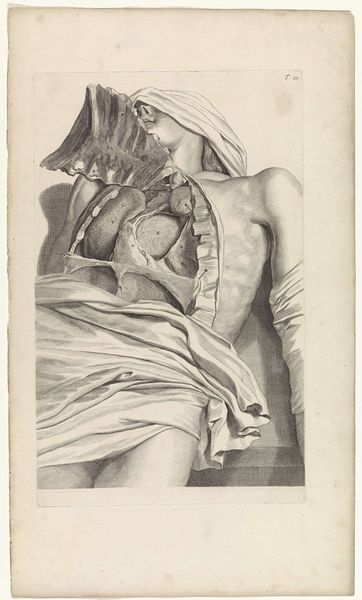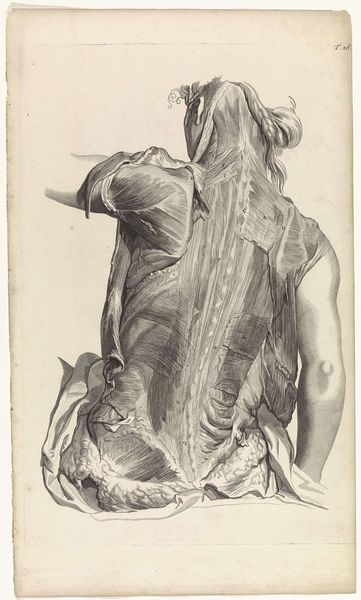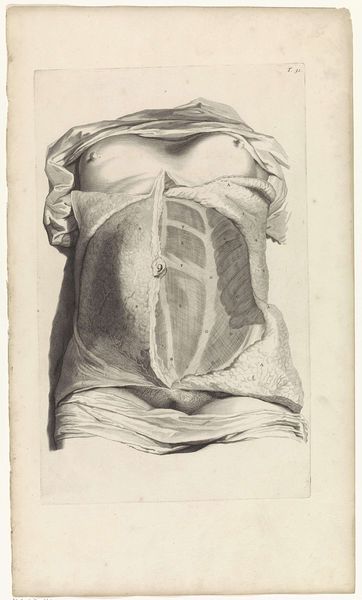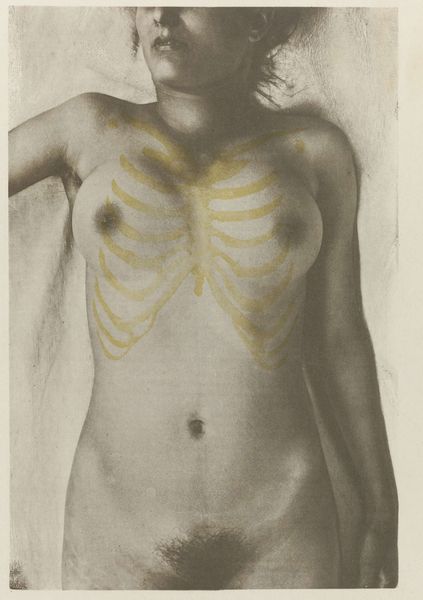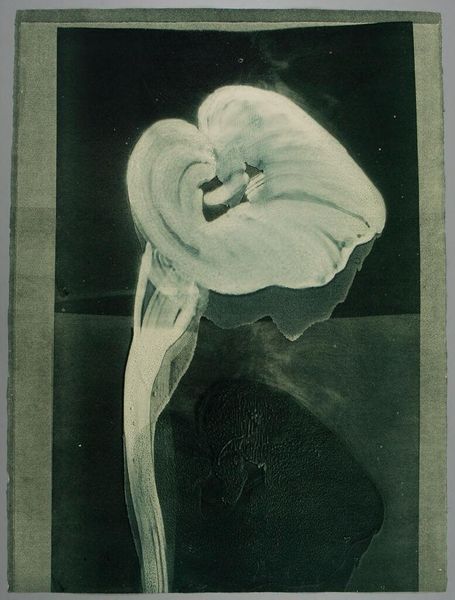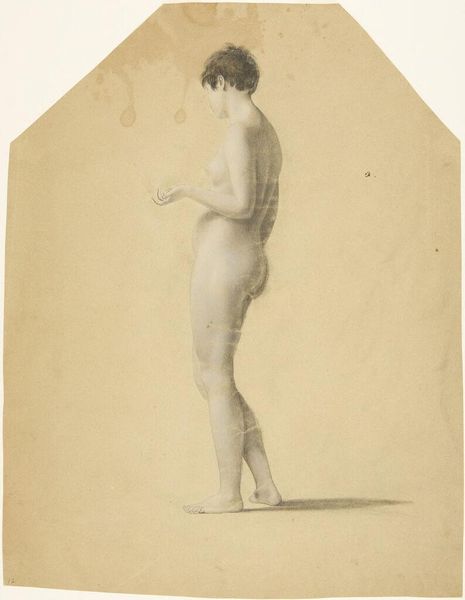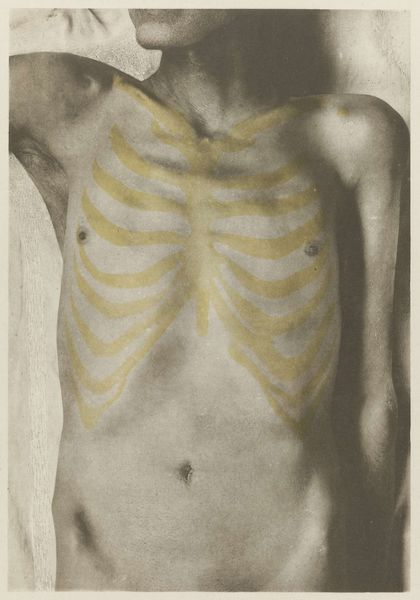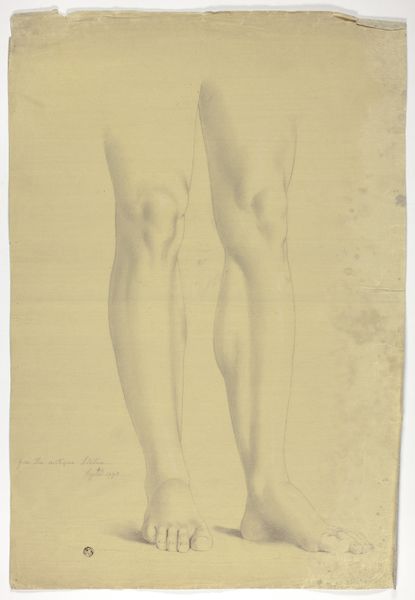
drawing, paper, ink
#
drawing
#
figuration
#
paper
#
ink
#
academic-art
#
nude
Dimensions: width 305 mm, height 498 mm
Copyright: Rijks Museum: Open Domain
Curator: Right, let's dive in. What we have here is a drawing titled "Anatomical Study of a Woman's Back," dating back to 1685, made by Pieter van Gunst. It's an ink drawing on paper and resides in the Rijksmuseum's collection. Editor: My first thought is, "wow," the intensity is captivating. There’s something profoundly human yet incredibly clinical about it. Like peeling back layers, both literally and figuratively. It's eerie, beautiful, and stark. Curator: Absolutely. The work provides insight into the intersection of art, science, and gender within the context of 17th-century anatomical studies. What's particularly striking is how these studies often pathologized female bodies. These representations highlight societal perceptions that often treated women's bodies as objects for dissection and study, thus reinforcing gendered power dynamics. Editor: It almost feels… vulnerable. Look at how the head is wrapped; there's a tenderness contrasted with the raw exposure of the musculature. I’m wondering what story this rendering wants to reveal beyond pure scientific illustration. I bet that many medical men, hidden in back rooms, furtively looked at drawings such as this one in search of life and its secrets! Curator: Precisely. Van Gunst uses ink to map the intricate layers of flesh and muscle. Consider too, how academic art was being established as a signifier of status. We should examine not just the technical mastery but also the historical narrative concerning beauty standards and the male gaze within art and medicine. The figuration here isn't just objective; it's loaded. Editor: It definitely makes you consider beauty. You see how vulnerable and mortal all bodies are when reduced to basic building blocks. There's nothing performative here. It's a human body laid bare, an ephemeral monument made of vulnerable matter, not idealized form, that exists beyond what we’re taught is appealing to the eye. In some respects, I see nobility within imperfection here. Curator: It makes you ponder where societal control through medicine intersects with aesthetic judgment. How can we, today, look critically at such depictions while being cognizant of how knowledge production is historically enmeshed in these dynamics? Editor: A fascinating challenge indeed! I walked in just thinking I’d see old bones. What an extraordinary reminder that what’s revealed here tells much larger and more meaningful story about identity, health, science and power.
Comments
No comments
Be the first to comment and join the conversation on the ultimate creative platform.
